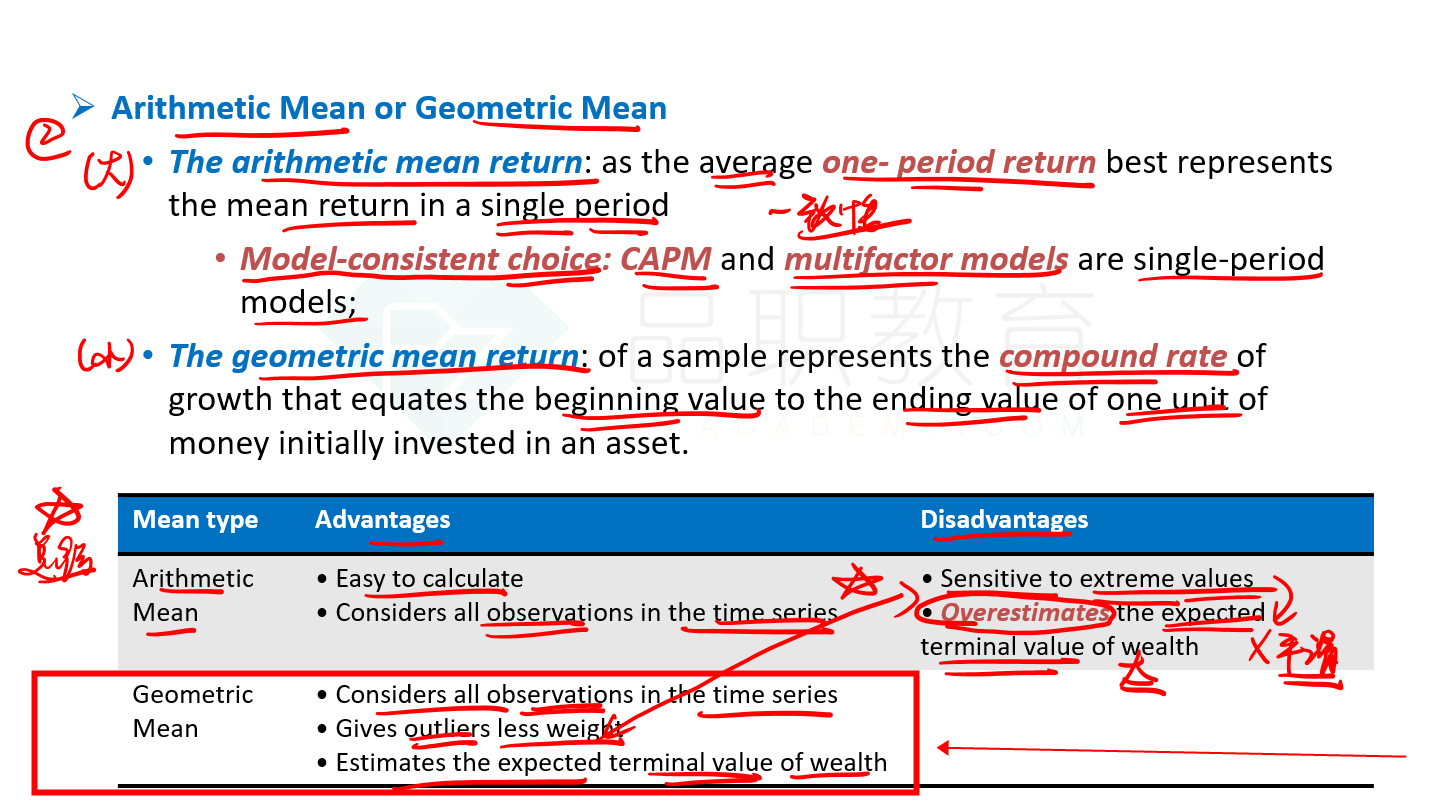NO.PZ202210140200000105
问题如下:
An equity index is established in Year 1 for a country that has recently moved to a market economy. The index vendor constructed returns for the four years prior to Year 1 based on the initial group of companies constituting the index in Year 1. From Year 12 to Year 16, a series of military confrontations concerning a disputed border disrupted the economy and financial markets. The dispute is conclusively arbitrated at the end of Year 16. In total, 20 years of equity market return history is available. Other selected data are in the following tables.

Common stock issues in the aforementioned market with average systematic risk are most likely to have required rates of return of:
选项:
A.between 2% and 7%.
between 7% and 9%.
9% or greater.
解释:
C is correct. Based on a long-term government bond yield of 7%, a beta of 1, and any of the risk premium estimates that can be calculated from the givens (e.g., a 2% historical risk premium estimate or 3.0% Grinold-Kroner ERP estimate), the required rate of return would be at least 9%. Based on using a short-term rate of 9%, C is the correct choice.
1
这道题考查的是计算 cost of equity,方法是用 CAPM,解题思路如下
首先,题干表述 "with average systematic risk"
如果个股的风险,被描述成是平均的系统风险,就是在隐含的表达,个股的贝塔等于 1
相当于大盘变动 1%,个股也变动 1%
2
这道题之所以假设 Beta 等于 1,是为了简化,出题人希望学员将理解的关键,放在 CAPM 公式的 rf 和 ERP 上面
如果 Beta 不等于 1,相当于还考查了额外的计算
3
接着分析
如果 Beta 等于 1,CAPM 公式简化成:rf + ERP
先考虑 rf
如果使用短期债,9%,则不用考虑 ERP 就已经可以选出 C
如果使用长期债,7%,再考虑 ERP
4
EPR 又有两种计算方法
但是不管是历史估计法的 2%,还是未来估计法的 3%,加上 7% 之后,结果都是大于等于 9% 的,所以也选 C
所以,综合以上情况,答案是选 C
5
上面就是 Beta 等于 1 的好处,不需要额外的计算量,让考生将分析的重点,集中在出题人想考查的角度,更加聚焦专注
EPR 的计算(历史估计法的 2%,还是未来估计法的 3%)
是怎么计算出来的?





